Your herb garden looks like it needs a flavorful pick-me-up. Parsley, cilantro, and rosemary certainly set a strong foundation, but it’s time to branch out with easy-to-grow chives. This tough-as-nails, clumping culinary herb is known for its subtle onion-like flavor that adds depth to nearly any dish from eggs to soup. Though a punchy treat isn’t the only thing this plant has to offer.
Bevin Cohen, gardener and author of Herbs in Every Season, believes chives make an outstanding addition to any garden, as their purple or white ball-shaped flowers and fragrant foliage come with a plethora of benefits. “Chives attract beneficial pollinators while repelling many garden pests,” says Cohen. “They add a wonderful visual texture to borders and require very little maintenance.”
Herbs in Every Season: 48 Edible and Medicinal Herbs for the Kitchen, Garden, and Apothecary
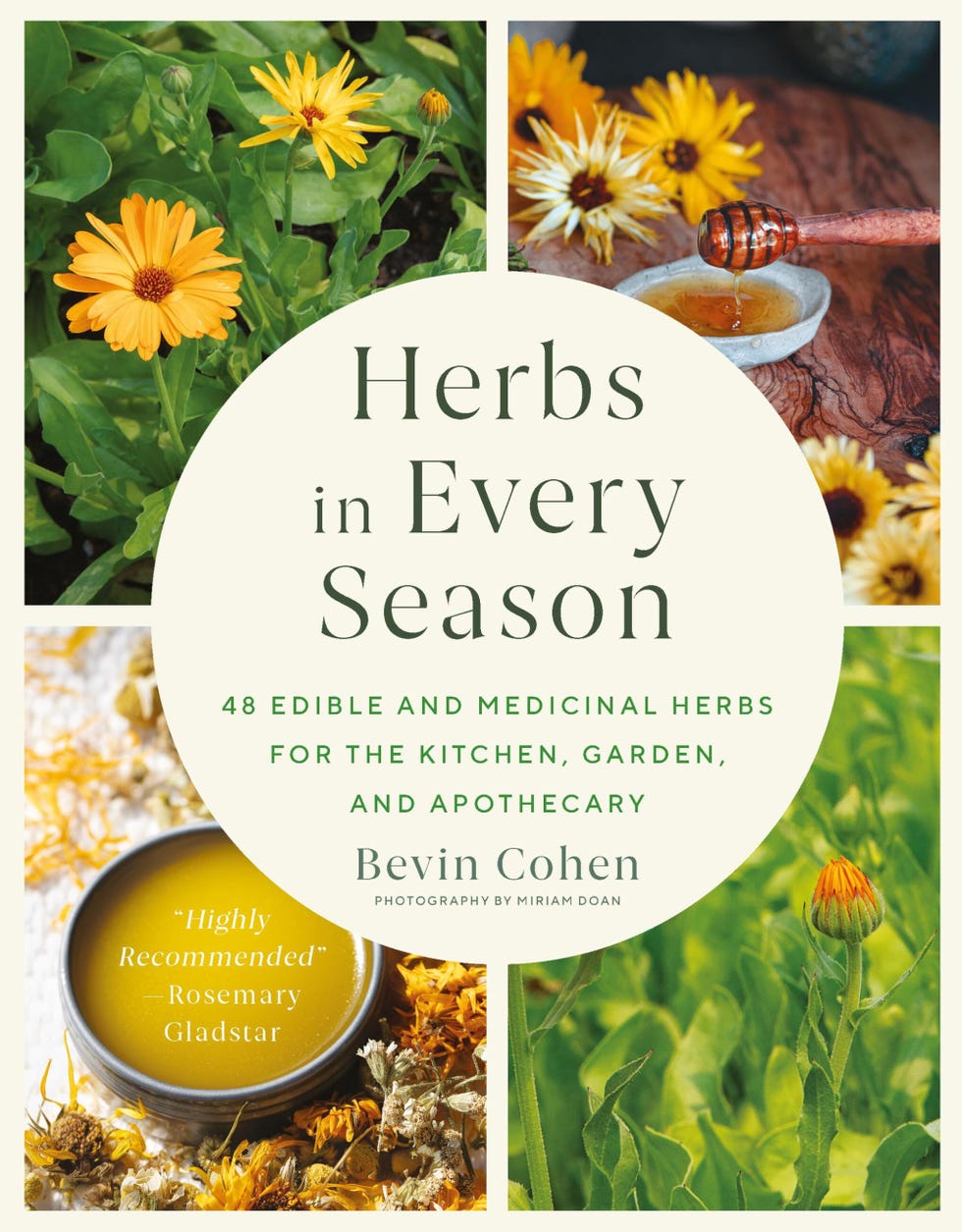
The herbaceous perennial can be grown in USDA Hardiness Zones 3 to 9 (check your zone here), meaning it can withstand a wide range of climates and conditions. Plus, when given the right care, you can expect to see new chive clumps popping up in the following growing season since it’s a self-seeding plant.
Below, we break down everything you need to know about these allium herbs, from how to plant them to how to separate the clumps for better growth. Plus, Cohen shares his favorite ways to use the foliage and flowers after harvesting.
For more gardening advice:
Best Varieties of Chives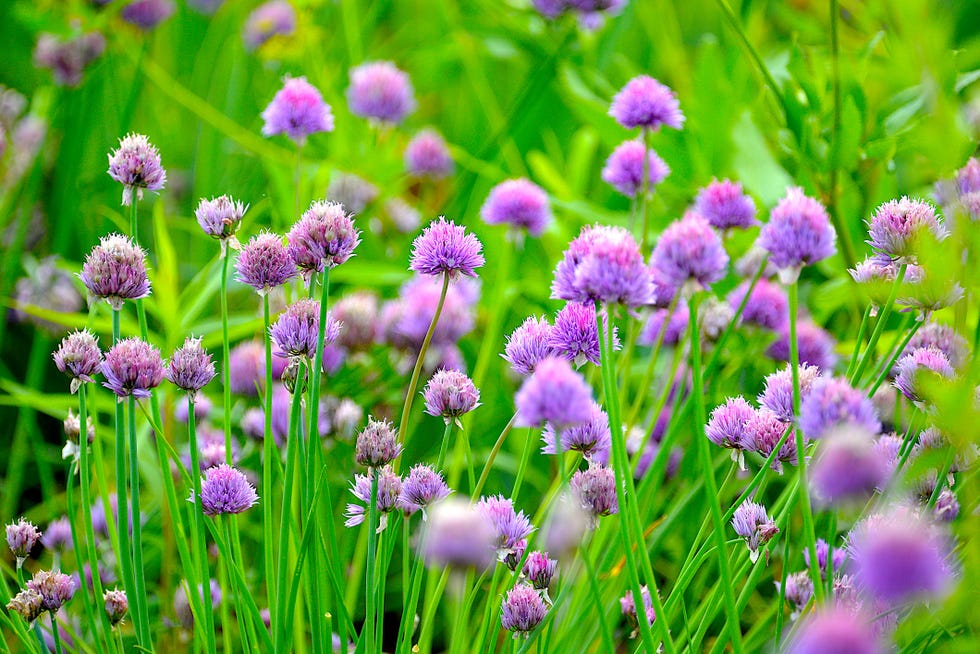
Philippe Gerber//Getty Images
Chives can be divided into two distinct categories: common chives (Allium schoenoprasum) and garlic chives (Allium tuberosum). The common variety has slender, tubular leaves and small lilac flowers, offering an onion-like flavor.
As the name suggests, garlic chives, also known as Chinese chives, have a taste similar to garlic, only a bit milder. This variety has longer, flatter foliage that can produce white flowers, but it tends to be less cold-tolerant.
Cohen recommends starting with a couple of common chives since they are a little more forgiving and add a unique beauty to the garden. Those include:
Nelly: This variety grows in an upright habit with fine-to-medium, dark blue-green leaves.
Staro: This variety has thicker, dark green leaves that make it a wonderful option for drying and freezing. The flowers are also edible with a sweeter onion flavor.
How to Plant Chives
Chives are considered one of the easiest herbs to grow as they can be planted from seeds, transplants, or by dividing existing plants. The herb can thrive both directly in the ground as in a garden borders with other, sun-loving flowers or in a container garden for easy culinary use.
If growing from seeds, simply sprinkle them over nutrient-rich, well-draining soil about 8 to 12 inches apart in an area that receives full sun. Cohen adds that you can plant the seeds “after the risk of frost has passed, or start the seeds indoors about four weeks before your last frost date.”
If working with seedlings, plant them into the ground or container around the same depth they were growing in their original growing pot. Again, it’s important to allow ample space between each plant as chives have a clump-forming habit and can become easily overcrowded if planted too closely.
Burpee Potting Mix
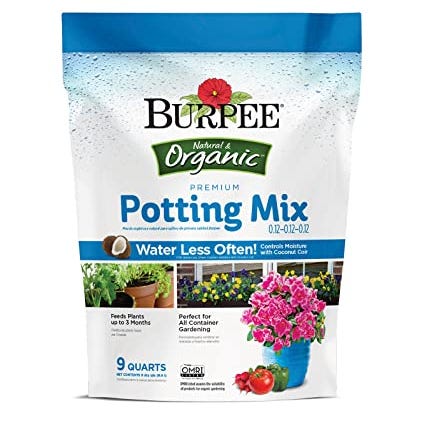 How to Care for Chives
How to Care for Chives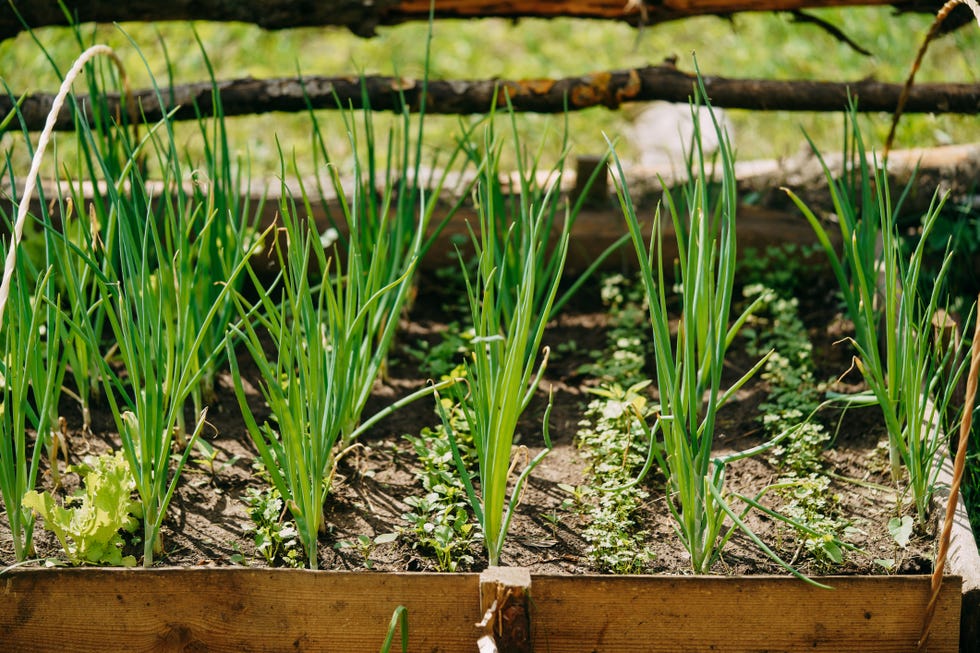
Svetlana Repnitskaya//Getty Images
Light
Chives thrive best in full sun in most areas, receiving six or more hours of direct sunlight per day. If you live in a hotter climate, chives can also grow in an area that receives partial afternoon shade to help combat the intense heat (the flowers may not grow as prolifically, though).
Soil
Chives prefer well-draining, sandy soils that are rich in nutrients. However, chives can adapt to most soils except those particularly heavy in clay.
Water
Chives are drought-tolerant when established—but that does not mean they don’t appreciate a thorough drink. During the warmer months, plan to water the plants at least once a week after the top one to two inches of soil have dried. It may only need to be watered once every couple of weeks during the cooler months.
Fertilizer
Cohen personally doesn’t fertilize his chives, but if yours are needing a boost he says to apply a very light application of 5-10-5 fertilizer once each spring. Any chives planted in a pot may need to be fertilized a few times during the growing season since their nutrients tend to drain quicker.
Espoma 5-10-5 Garden Food
 Winter Care
Winter Care
Chives can withstand cool temperatures, yet they will not survive the harsh conditions of winter. The good news is that you don’t have to worry about digging anything up because this herb will die back in the winter and regrow when spring arrives, thanks to its self-seeding nature.
If you live in a warmer climate, you can expect your fragrant herb to remain green all winter long. Chives planted in pots can also survive indoors when placed in a sunny spot, allowing you to harvest them well into the colder months.
How to Harvest Chives
Chives can be harvested as soon as they reach an appropriate length for cutting (around 30 days after planting). Simply cut the leaves at the base, one to two inches above the soil line with a clean pair of garden scissors. The herb’s flowers should only be harvested when they reach their peak. Cohen encourages beginners not to overlook the culinary benefits of the flowers, as they can be used just as much as the green leaves.
“There are so many wonderful ways to use chives; they can be chopped small and added to eggs, tossed on salads, added to pasta—your imagination is your only limit,” says Cohen. “I like to infuse chive flowers in vinegar to make a tasty salad dressing or marinade.”
Niwaki Rattan Snips
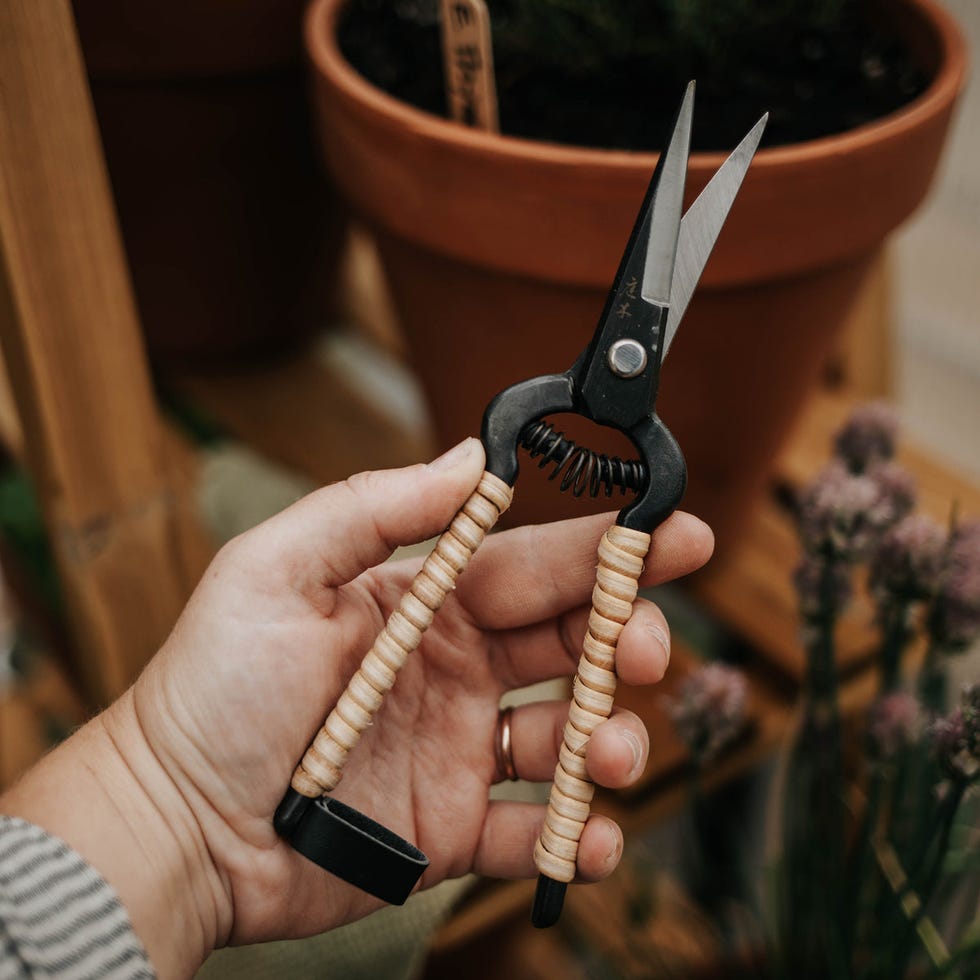 How to Separate Chives
How to Separate Chives
PhotoCPL//Getty Images
Chives’ clump-forming nature can lead to the plants getting crowded over the course of a few growing seasons. Every three to four years, carefully dig up a clump of chives and their entire root system with a garden trowel. Gently separate the clump into smaller gatherings with your hands or a garden fork, discarding any old or damaged roots. Plant the extra bulbs elsewhere in your garden or in a container indoors to encourage more growth. If you want to stop new chives from growing, make sure to cut back the flowers to prevent the plants from going to seed.
Fiskars Ergo Gardening Hand Trowel
 Common Issues with Chives
Common Issues with Chives
Similar to other herbs, overwatering tends to be the most common issue people run into when caring for chives. Yellowing or limp leaves are telltale signs that the plant is probably too moist. Wait to water until the top two inches of soil have fully dried—if you continue to water too much your chives are bound to experience the dreaded root rot or powdery mildew on the leaves.
XLUX Soil Moisture Meter
 Common Questions
Common Questions
Are chives considered toxic to pets?
Chives are toxic to both cats and dogs, according to the ASPCA, so make sure to keep furry friends away from plants.
What’s the typical size of a chive plant?
Chives can reach up to 8 to 12 inches tall and wide when fully matured.
Can I grow chives inside my house?
Yes, just make sure to place your chive plant on or near a window that receives at least six to eight hours of light.
Will my chives grow back after I harvest it?
Yes, chives will grow back after you harvest their leaves and even rebloom the next growing season.
Where to Buy Chive Seeds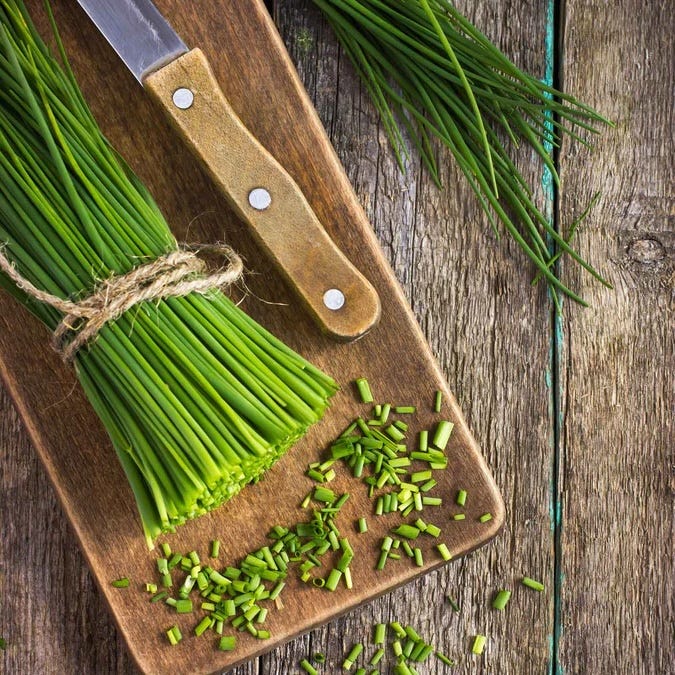
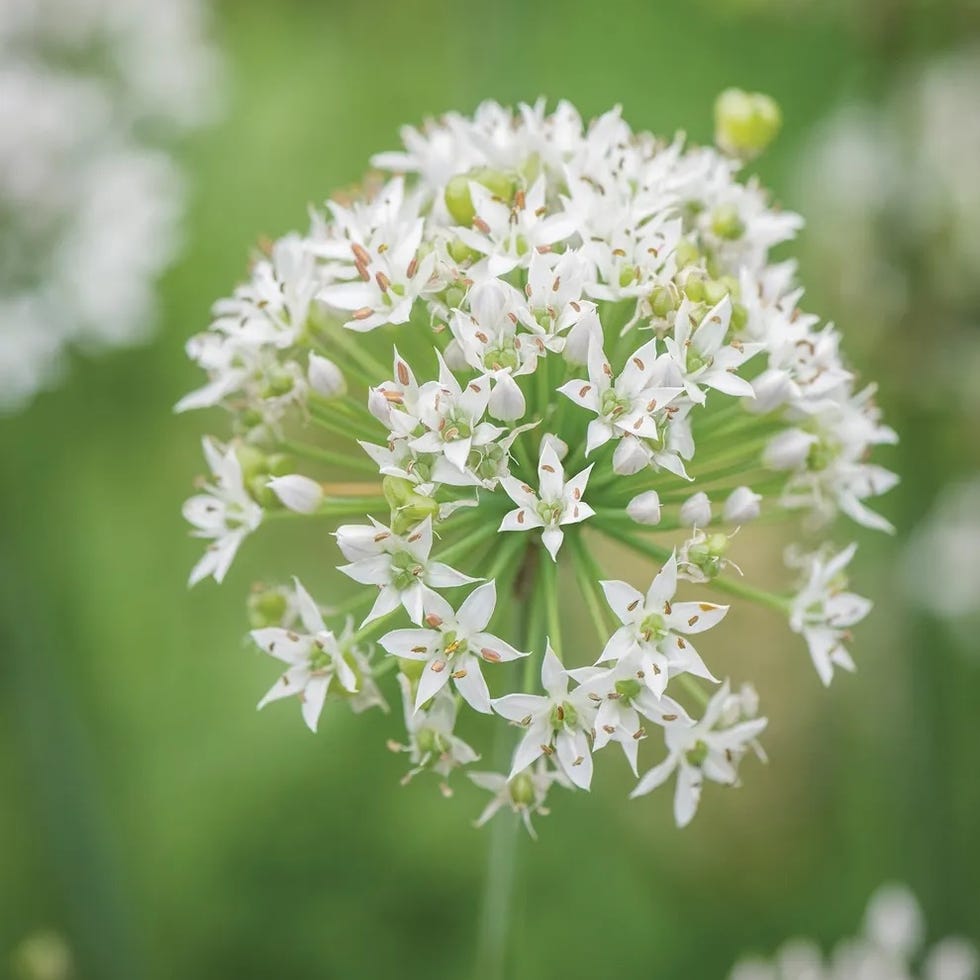
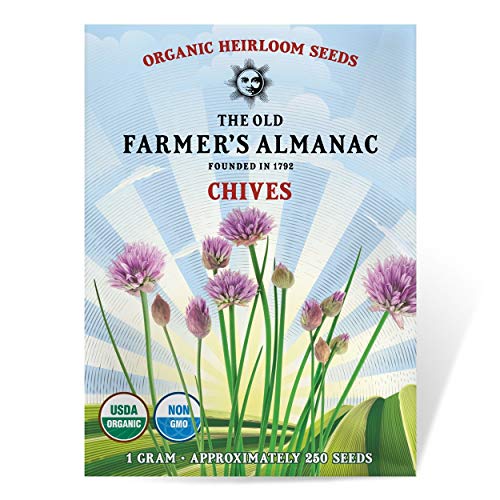 Heirloom Organic Chive Seeds
Heirloom Organic Chive Seeds
 Back to the Roots Seed Packet – Chives ‘Garlic’ 140mg
Back to the Roots Seed Packet – Chives ‘Garlic’ 140mg
Sarah DiMarco (she/her) is the associate editor at VERANDA, where she produces and edits engaging content covering design, architecture, art, gardening, and travel. Since joining the team in 2019, she has written captivating house tours, in-depth features on emerging design trends, practical gardening guides, and inspiring travel stories. Over the course of her five-year career, she has cultivated a strong network of multidisciplinary designers whose expertise she frequently draws on for her stories. Prior to joining VERANDA, she earned her master’s degree in Magazine, Newspaper, and Online Journalism at Syracuse University. When she’s not writing or researching her next feature, you’ll find her experimenting in the kitchen, making pottery, or volunteering at the Desert Island Supply Co.

